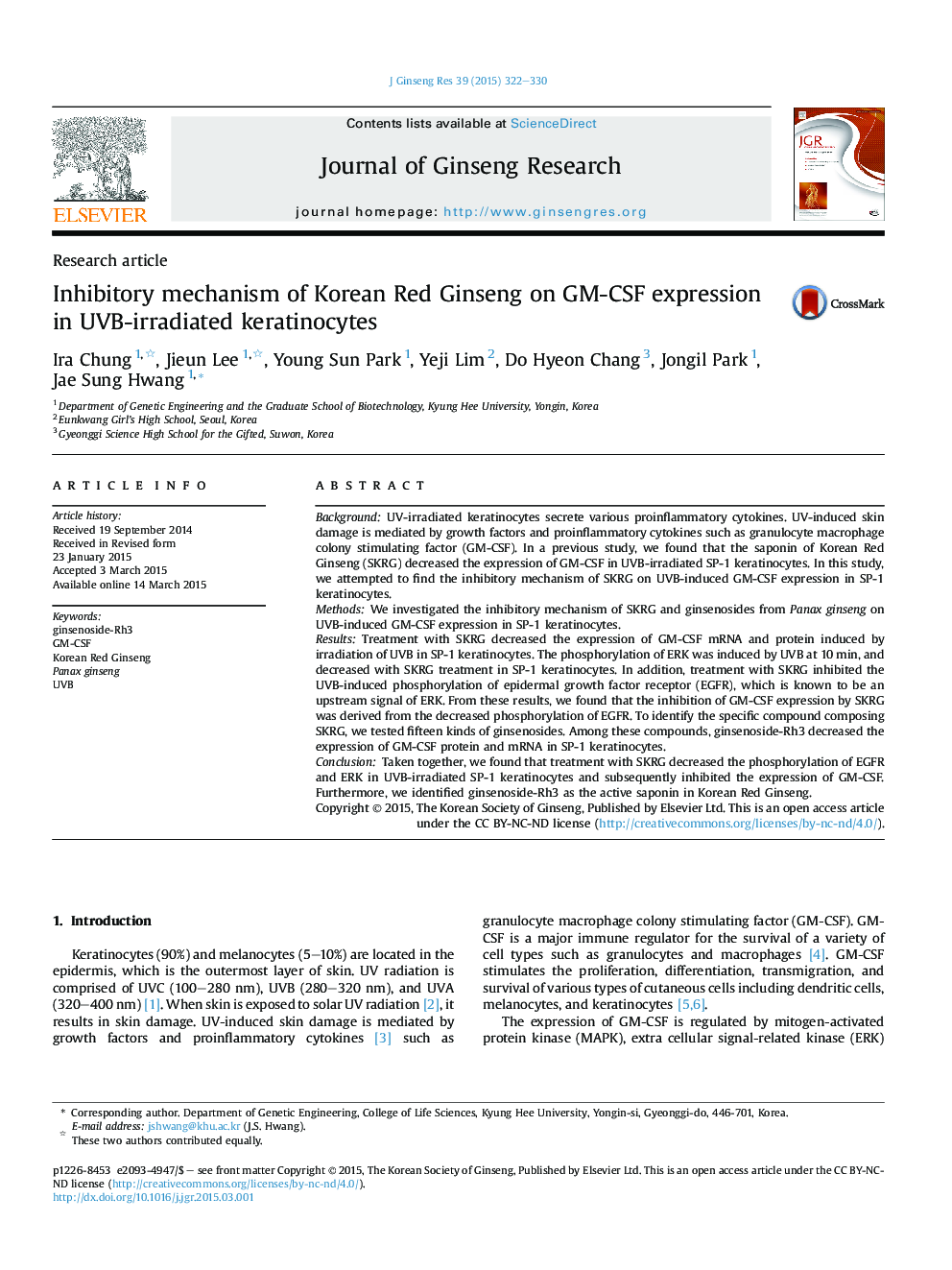| Article ID | Journal | Published Year | Pages | File Type |
|---|---|---|---|---|
| 3099292 | Journal of Ginseng Research | 2015 | 9 Pages |
BackgroundUV-irradiated keratinocytes secrete various proinflammatory cytokines. UV-induced skin damage is mediated by growth factors and proinflammatory cytokines such as granulocyte macrophage colony stimulating factor (GM-CSF). In a previous study, we found that the saponin of Korean Red Ginseng (SKRG) decreased the expression of GM-CSF in UVB-irradiated SP-1 keratinocytes. In this study, we attempted to find the inhibitory mechanism of SKRG on UVB-induced GM-CSF expression in SP-1 keratinocytes.MethodsWe investigated the inhibitory mechanism of SKRG and ginsenosides from Panax ginseng on UVB-induced GM-CSF expression in SP-1 keratinocytes.ResultsTreatment with SKRG decreased the expression of GM-CSF mRNA and protein induced by irradiation of UVB in SP-1 keratinocytes. The phosphorylation of ERK was induced by UVB at 10 min, and decreased with SKRG treatment in SP-1 keratinocytes. In addition, treatment with SKRG inhibited the UVB-induced phosphorylation of epidermal growth factor receptor (EGFR), which is known to be an upstream signal of ERK. From these results, we found that the inhibition of GM-CSF expression by SKRG was derived from the decreased phosphorylation of EGFR. To identify the specific compound composing SKRG, we tested fifteen kinds of ginsenosides. Among these compounds, ginsenoside-Rh3 decreased the expression of GM-CSF protein and mRNA in SP-1 keratinocytes.ConclusionTaken together, we found that treatment with SKRG decreased the phosphorylation of EGFR and ERK in UVB-irradiated SP-1 keratinocytes and subsequently inhibited the expression of GM-CSF. Furthermore, we identified ginsenoside-Rh3 as the active saponin in Korean Red Ginseng.
